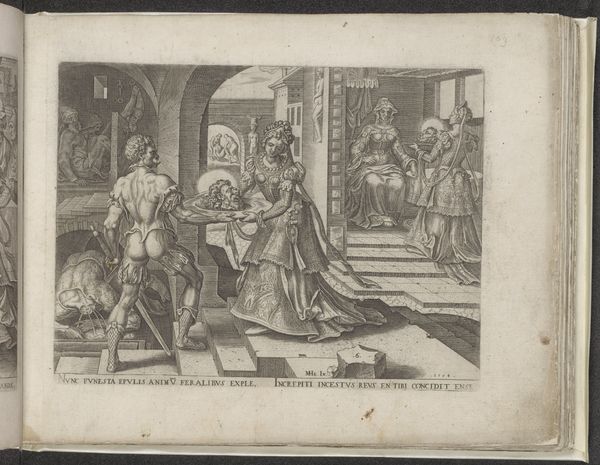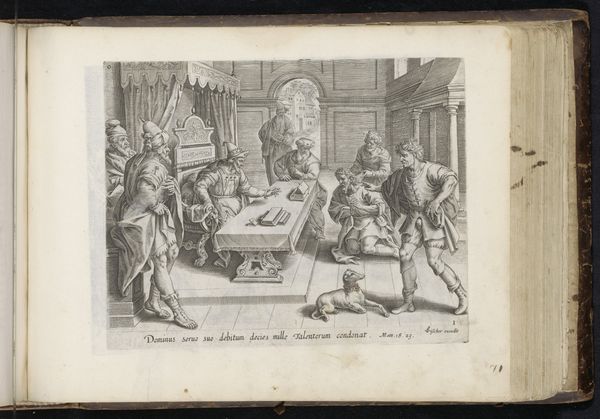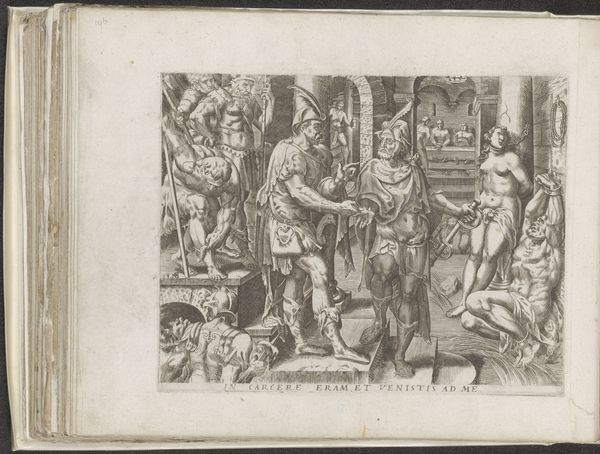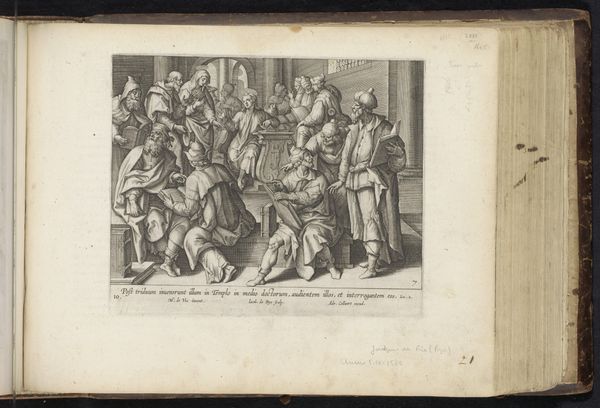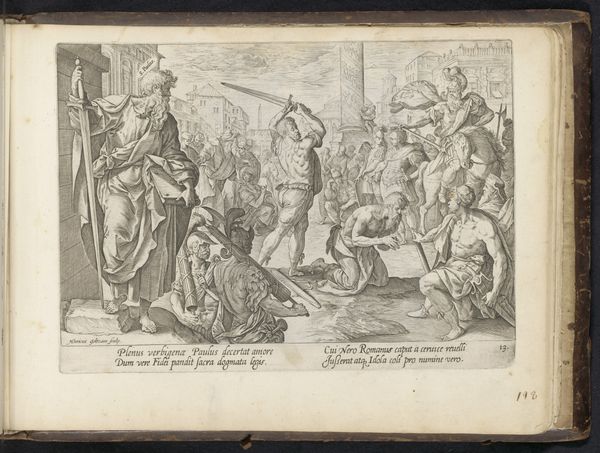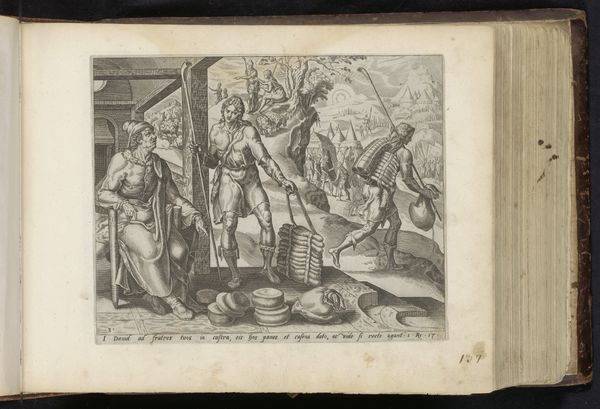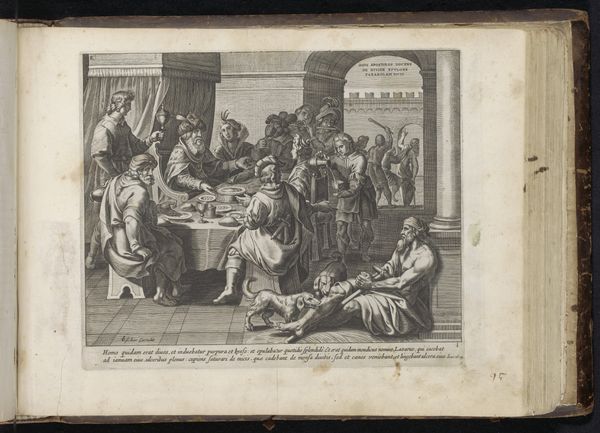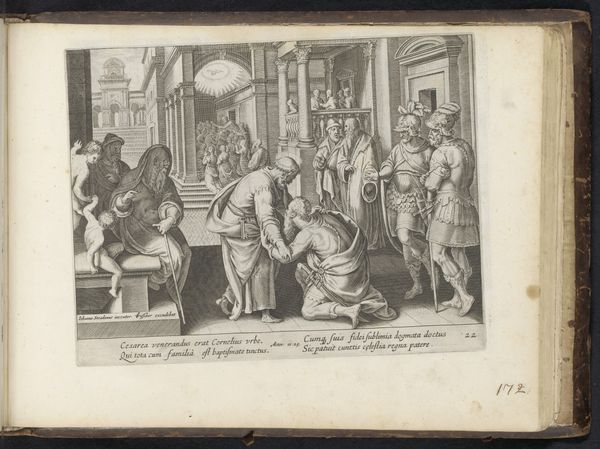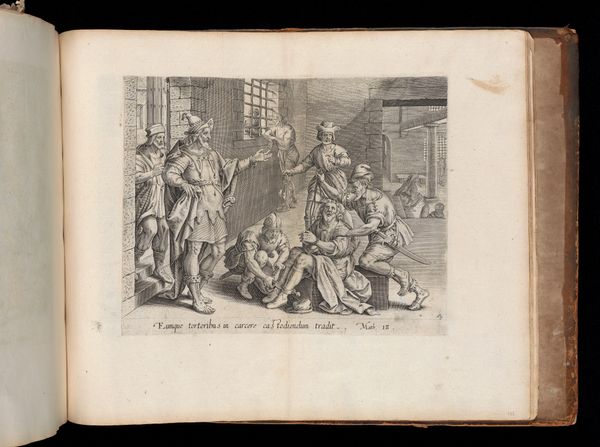
print, engraving
#
narrative-art
# print
#
figuration
#
coloured pencil
#
genre-painting
#
history-painting
#
northern-renaissance
#
engraving
Dimensions: height 198 mm, width 248 mm
Copyright: Rijks Museum: Open Domain
Curator: Before us is an engraving dating from 1585 to 1646, entitled "Onbarmhartige dienaar voorgeleid aan de koning," which translates to "Unmerciful Servant Presented to the King." It's part of the Rijksmuseum's collection and comes from an anonymous artist working in the Northern Renaissance tradition. Editor: Immediately, the dense detail strikes me—the almost frantic cross-hatching used to build shadow and volume. There's a dramatic tension, a sense of judgement looming over the entire scene, even within the tight confines of the image itself. Curator: Absolutely. The composition leads us through the process of power and production. As a print, we need to think about the production of it as it moves beyond a singular artist object into the material relations of labour that existed between the artist, the merchant and consumer. Editor: From a formal standpoint, the artist utilizes the architectural setting and interior furnishings to construct a narrative framework, almost stage-like, where human interactions play out, and one character appears to be chastising another. It gives it a structured, hierarchical feel with the architecture mirroring the relationship dynamic. Curator: It highlights the social relations of justice in the 16th-17th centuries. Justice was material and a performative, highly social display. Editor: Indeed, the artist captures it well. Look at how the line directs your attention from the seated figures at the table towards the standing king, and then finally resting upon the accused servant. These careful visual cues provide a clear path through the moral narrative. Curator: And let us not forget about that small dog! In its position close to the suppliant figure in the lower section of the image, the dog speaks of ideas of servitude, social strata, as well as human-animal relations, and their co-production throughout history. Editor: Agreed. This work, as both a religious piece, a commentary on political powers, and the history of printmaking itself gives the viewer much to admire in its construction, meaning, and visual cues. Curator: This really sheds light on a lot in a short period of time. I see so much more context in my appreciation for it now.
Comments
No comments
Be the first to comment and join the conversation on the ultimate creative platform.
